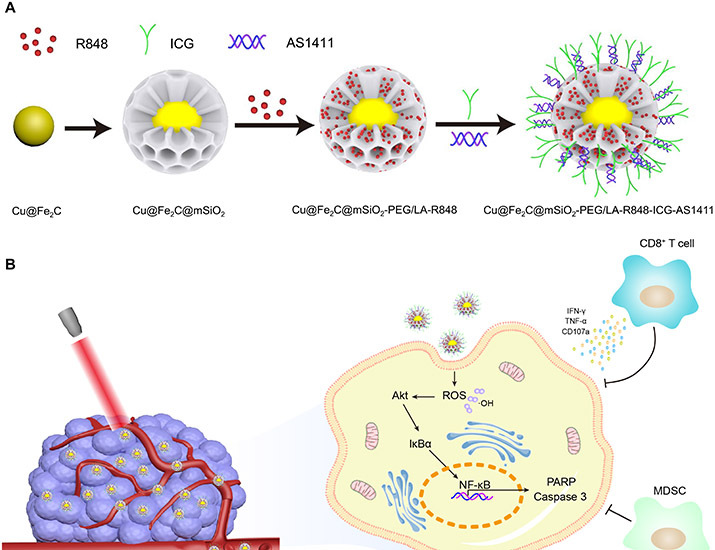Shuren Wang:
ORCID: https://orcid.org/0000-0002-1647-0643
Role: ConceptualizationRole: Data curationRole: Formal analysisRole: InvestigationRole:
MethodologyRole: ResourcesRole: ValidationRole: VisualizationRole: Writing - original
draftRole: Writing - review & editing
Zhiyi Wang:
ORCID: https://orcid.org/0000-0002-5619-2238
Role: Formal analysisRole: InvestigationRole: MethodologyRole: Project administrationRole:
Validation
Ziyuan Li:
ORCID: https://orcid.org/0000-0003-4552-1224
Role: InvestigationRole: Resources
Xiaoguang Zhang: Role: InvestigationRole: Resources
Hongtao Zhang: Role: InvestigationRole: Resources
Teng Zhang: Role: InvestigationRole: Resources
Xiangxi Meng:
ORCID: https://orcid.org/0000-0002-6590-011X
Role: MethodologyRole: Resources
Fugeng Sheng: Role: Resources
Yanglong Hou:
ORCID: https://orcid.org/0000-0003-0579-4594
Role: ConceptualizationRole: Data curationRole: Formal analysisRole: Funding acquisitionRole:
InvestigationRole: MethodologyRole: Project administrationRole: ResourcesRole: SupervisionRole:
ValidationRole: VisualizationRole: Writing - original draftRole: Writing - review
& editing
Journal ID (nlm-ta): Sci Adv
Journal ID (iso-abbrev): Sci Adv
Journal ID (publisher-id): sciadv
Journal ID (hwp): advances
Title:
Science Advances
Publisher:
American Association for the Advancement of Science
ISSN
(Electronic):
2375-2548
Publication date Collection:
May
2022
Publication date
(Electronic, pub):
27
May
2022
Volume: 8
Issue: 21
Electronic Location Identifier: eabn3883
Affiliations
[1
]Beijing Key Laboratory of Magnetoelectric Materials and Devices, School of Materials
Science and Engineering, Beijing Innovation Centre for Engineering Science and Advanced
Technology, Peking University, Beijing 100871, China.
[2
]Institute of Medical Technology, Peking University Health Science Center, Peking University,
Beijing 100191, China.
[3
]Department of Biomedical Engineering, Peking University, Beijing 100871, China.
[4
]Department of Radiology, Fifth Medical Center of Chinese PLA General Hospital, Beijing
100071, China.
[5
]Key Laboratory of Carcinogenesis and Translational Research (Ministry of Education/Beijing),
Key Laboratory for Research and Evaluation of Radiopharmaceuticals (National Medical
Products Administration), Department of Nuclear Medicine, Peking University Cancer
Hospital and Institute, Beijing 100142, China.
Author notes
[†]
These authors contributed equally to this work.
Author information
Article
Publisher ID:
abn3883
DOI: 10.1126/sciadv.abn3883
PMC ID: 9140981
PubMed ID: 35622914
SO-VID: dcd10561-02e5-4680-9ec7-c04e6e4b74ca
Copyright © Copyright © 2022 The Authors, some rights reserved; exclusive licensee American Association
for the Advancement of Science. No claim to original U.S. Government Works. Distributed
under a Creative Commons Attribution NonCommercial License 4.0 (CC BY-NC).
License:
This is an open-access article distributed under the terms of the
Creative Commons Attribution-NonCommercial license, which permits use, distribution, and reproduction in any medium, so long as the
resultant use is
not for commercial advantage and provided the original work is properly cited.
Funded by:
FundRef http://dx.doi.org/10.13039/501100001809, National Natural Science Foundation of China;
Award ID: 52027801
Funded by:
FundRef http://dx.doi.org/10.13039/501100001809, National Natural Science Foundation of China;
Award ID: 51631001
Funded by:
FundRef http://dx.doi.org/10.13039/501100004826, Natural Science Foundation of Beijing Municipality;
Award ID: 2191001
Funded by:
FundRef http://dx.doi.org/10.13039/501100004826, Natural Science Foundation of Beijing Municipality;
Award ID: 2017YFA0206301
Funded by:
National key R&D program of China;
Award ID: 2017YFA0206301
Subject:
Research Article
Subject:
Biomedicine and Life Sciences
Subject:
SciAdv r-articles
Subject:
Cancer
Subject:
Materials Science
Subject:
Cancer

